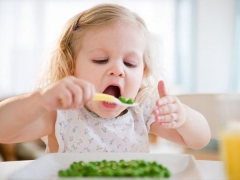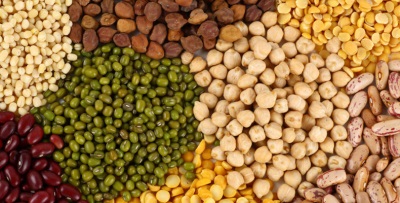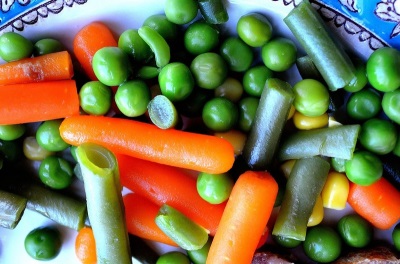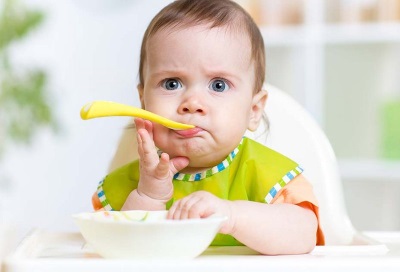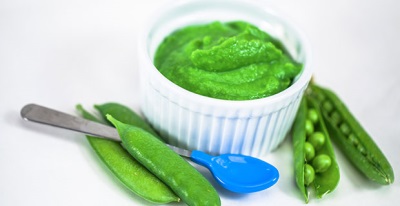At what age can you give your child legumes - peas, beans and lentils?
Many mothers are happy to eat legumes themselves, but are afraid to enter them into the diet of their son or daughter, believing that these products will harm the child's digestive tract. They doubt whether a year-old child can be given peas, lentils and beans, and often do not know which dishes are made from legumes for a children's menu. Let's dispel fears and clarify when it is permissible to introduce into the diet of children soybeans, peas and other products from this group.
Benefit
- They contain a large amount of proteins, as well as fiber, so they combine the advantages of meat and vegetable dishes. The most valuable protein content of legumes is soy. It is recommended if you can not eat meat or milk, for example, with lactase deficiency.
- They have a lot of vitamins. In particular, soy contains a lot of beta-carotene, vitamin D, choline, biotin, folic acid, vitamin E and vitamins of group B. There are a lot of vitamins C, PP, group B, vitamin K and carotene in beans and green peas.
- They are a source of mineral compounds. The child will receive copper, zinc, iodine, calcium, magnesium, iron and other minerals from the beans. Peas are a valuable source of selenium, magnesium, calcium and iron salts, phosphorus, iodine and potassium.
- The use of such products contributes to removal of radionuclides, heavy metals and other harmful substances from the human body.
- They are actively involved in the work of the digestive system. Their use enhances the production of gastric juice and facilitates bowel movement.
- In addition to group B vitamins, lentils contain healthy omega-fats, magnesium and iron.
- Lentils are called ecologically pure products. since it does not accumulate harmful compounds and can be safely used by children.
- At the bean celebrate antimicrobial, sugar lowering and diuretic action.
- Eating green peas helps avoid anemia.
- Peas, soybeans, beans and other legumes consider allergy free products.
Minuses
Too early introduction of such products into the children's diet or their excess cause increased gas formation in the intestine, as well as constipation. Mature legumes are really quite heavy to assimilate, so they are soaked before cooking and offered to children in small quantities. If you follow these recommendations, all the disadvantages can be avoided.
From what age can I give?
Green Peas and Green beans You can enter in the lure of the kids along with other vegetable dishes, including them in multicomponent vegetable purees and pureed soups. This can be done from 7-8 months of age. Also, the child can be offered ready-made mashed potatoes, allowed for his age. At the same time, it is recommended to include beans in the children's menu no more than 2 times a week.
It is not advisable to cook dishes from mature legumes for a child under 2 years of age, but even at the age of two, such cultures are ground and offered only as part of soups and other multi-component dishes.
It is possible to give children separate dishes from dry peas, soybeans and beans from the age of 3 in an amount of not more than 100 grams. As for canned products, they can also be offered to children who have turned 3 years old.
Enter into the diet
You should start feeding with green fruits (young), including them in small quantities in vegetable soup recipes or mashed potatoes. Let the child gradually get used to new tastes, then his digestive tract will better cope with the digestion of this food.
Over time, you can treat a crumb of mashed green peas, and in a few weeks - mashed young beans (pods). For the first test, it is enough to give the baby a teaspoon of such puree, and during a normal reaction gradually increase the volume to 30-50 grams.
Cooking methods
- To boil the child green beans, they should be washed and soak for a while (for 5-10 minutes). To cook, pour the product with a large volume of water, bring to a boil and do not cover with a lid. Salt the dish at the end of cooking.
- If you cook mature legumes for your child, after a careful selection and washing, they should be soaked in cool water for 3 or 4 hours. Then they are also boiled with a strong boil in a large volume of water, not closing the lid, and salt is added to taste at the end of boiling. Next, they are mashed.
- In the menu of a child over 2 years old there can be not only pea porridge and mashed beans, but also such legumes as chops, casseroles, salads, stews and others.
- It is better to give such products together with vegetable dishes, since the combination of beans, peas and other legumes with animal protein impairs their digestion.
Tips for choosing
Choosing beans and peas, buy grains without damage, the same size and color. The pips must be large and shiny. When choosing lentils, too, give preference to grains with the same size, which will have a uniform color.
You can find out about what is more useful - peas or red beans, by watching the program “To live healthy!”.
